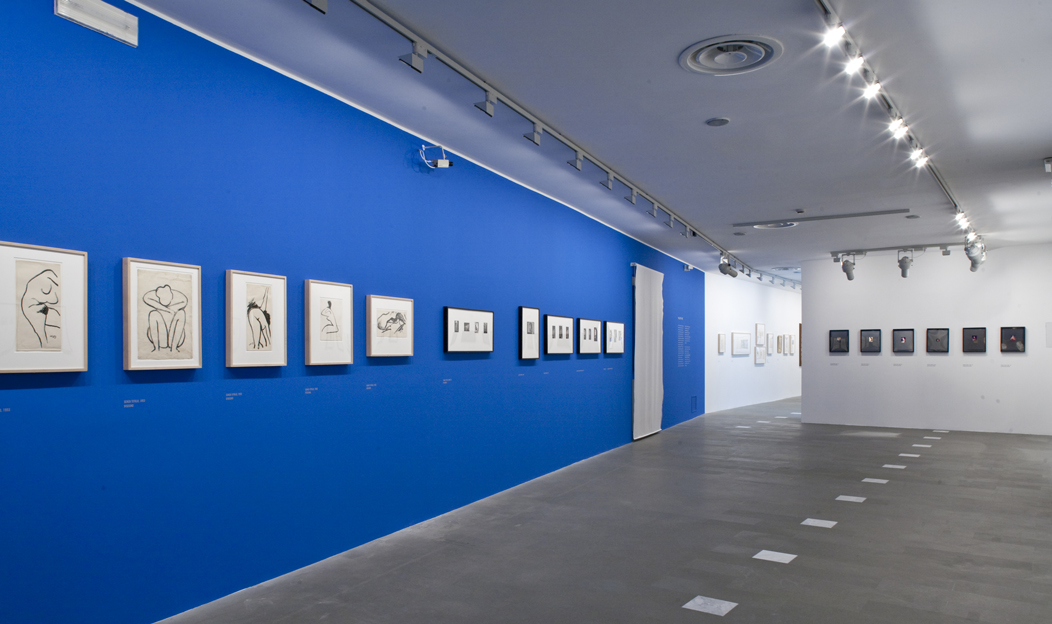Unconcerned but not indifferent features drawings, photographs, paintings, and sculptures as well as personal objects and images from the collection of the Man Ray Trust, Long Island, New York. Although individual pieces have occasionally been granted for major exhibitions, the foundation’s collection has never been exhibited in its entirety. In fact, after the death of Juliet Man Ray, the artist’s wife, the collection was housed in the basement of the latter’s family’s auto repair shop. Although the foundation has cataloged and authenticated more than 2000 works, the collection still remains largely unknown. Unconcerned but not indifferent, the first exhibition to open the doors of this treasure to the general public thanks to an agreement with the foundation, carries out a broad exploration of the Man Ray Trust’s collection and allows us to reveal a vast perspective, focusing attention on its masterpieces and together on the rarest pieces and simultaneously providing a unique insight into the artist’s life and work.
In 1976, upon Man Ray’s death, the artist’s estate passed into the hands of his wife who, together with her brothers, established the Man Ray Trust, which was to supervise and preserve this legacy. Part of the heritage was entrusted to the French National Museums, while, as regards the American collection, the foundation selected a complete series of pieces including works, objects, documents and personal effects that represented over sixty years of Man Ray’s creative activity. The foundation’s collection is unique in that it brings together, with all its elements, including little-known works from the early years, documents from his private life, sketches, documentation of important works and countless well-known masterpieces, belonging to different phases of his activity. of the artist. As we read in an article in the magazine Artnews from June 2002 regarding the foundation, the collection is “perfect”. Unconcerned but not indifferent it only presents works that the foundation has certified as “authentic”: it is the first and only large-scale exhibition of Man Ray’s work that can boast of this; in fact, the Man Ray Trust owns all rights to Man Ray’s complete works. Unconcerned but not indifferent collects around 300 pieces and is the first of its kind to place Man Ray’s work in relation to the elements and images from which he drew inspiration: his bowler hat and his cane, the objects coming from the shelves of his Parisian studio in rue de Ferou, his collection of erotic photos and the tools he used to create his famous ones rayograms . Thanks to the extraordinary value of the material made available by the Man Ray Trust, the exhibition allows us to explore the different stages of execution of the work: from the sketches to the complete realization of the artistic masterpiece, revealing that, from time to time, Man Ray used photographs as reference for his paintings and graphic works.
The exhibition brings together numerous works belonging to the various periods of Man Ray’s life. Many of the works are famous, but some of them have never been exhibited. Furthermore, thanks to a complete exploration of the foundation’s uncatalogued heritage, the exhibition displays, in an absolute preview, a selection of the following hitherto unknown works: a series of photographic plates relating to the work for Les mains libres with cutting lines by Man Ray, dated 1936 and 1937; documentary photographs of France in the 1920s; a document of Large Glass by Marcel Duchamp; prints in contact with Man Ray’s cutting lines that the artist made throughout his career; black and white Polaroid prints dating back to the early 1960s; a collection of color, framed transparencies created by Man Ray during his experiments with color photography; a work, the result of the collaboration between Man Ray and Max Ernst, composed of four frottages. The structure of Unconcerned but not indifferent traces the four periods of Man Ray’s work: New York, Paris, Los Angeles, Paris. The first part of the exhibition, New York, presents a series of copies of Man Ray’s personal archive cards, which he used to document his early works. These cards, the originals of which were stolen from the artist’s studio and never found again, have been the subject of considerable controversy and have never been exhibited before. Where possible they are displayed alongside the specific works they document.
Edited by Noriko Fuku and John Jacob
Noriko Fuku, independent Japanese curator, lives and works between the United States and Japan. John Jacob, independent curator and director of the Inge Morath Foundation in New York. Man Ray Trust Foundation exhibition, organized by La Fabrica in collaboration with MAN

